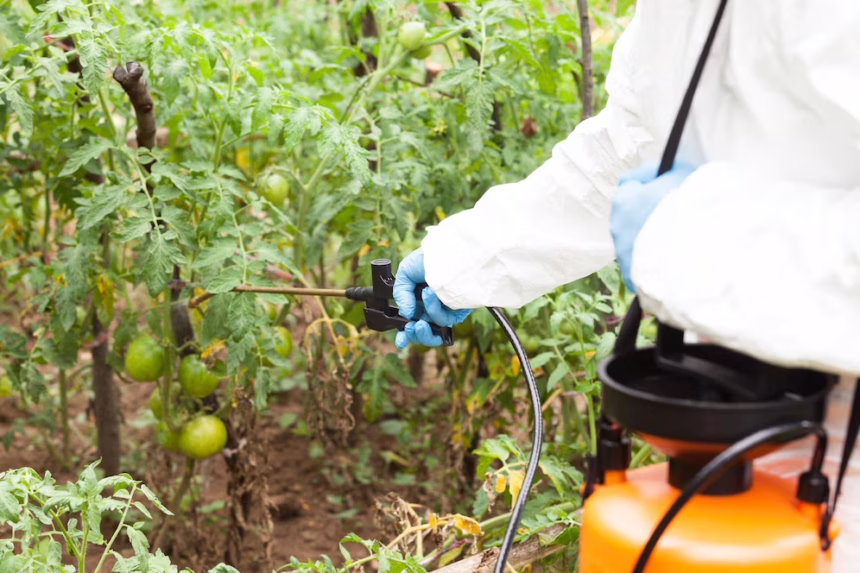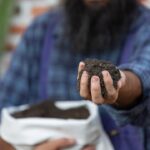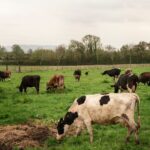Tomato farming can be highly rewarding, but it also comes with its challenges, particularly when it comes to pest management. While conventional methods often rely on chemical pesticides, many tomato farmers are turning to organic pest control methods to ensure their crops remain healthy and their produce stays chemical-free. Organic pest control not only helps protect the environment but also offers a sustainable and safer approach to farming. This article explores effective organic pest control strategies for tomato farms.
Why Choose Organic Pest Control?
Using organic pest control methods on tomato farms is becoming increasingly popular due to several advantages:
- Environmental Impact: Organic methods are less harmful to the environment. They help maintain soil health, reduce pollution, and support biodiversity.
- Health Benefits: By avoiding synthetic chemicals, organic farming helps ensure that the tomatoes are safe to eat, with fewer residues that can be harmful to human health.
- Sustainability: Organic farming promotes long-term sustainability. By reducing reliance on chemical pesticides, farmers help preserve ecosystems and support the health of pollinators like bees.
Common Tomato Pests and Organic Solutions
Tomatoes are susceptible to a range of pests that can damage plants and reduce yields. Here are some of the most common pests that affect tomato farms, along with effective organic pest control methods:
1. Aphids
Aphids are small, sap-sucking insects that can severely damage tomato plants by stunting growth and spreading viruses.
Organic Control Methods:
- Insecticidal Soap: A mixture of soap and water can effectively kill aphids on contact. Commercial insecticidal soaps are available, or you can make your own using a mild liquid soap.
- Neem Oil: Derived from the neem tree, neem oil is an excellent natural pesticide that disrupts the feeding and reproductive cycles of aphids.
- Encourage Beneficial Insects: Ladybugs, lacewing larvae, and other natural predators feed on aphids, helping keep their populations under control.
2. Whiteflies
Whiteflies are tiny flying insects that attack the undersides of tomato leaves, sucking out sap and spreading diseases like tomato yellow leaf curl virus.
Organic Control Methods:
- Yellow Sticky Traps: Whiteflies are attracted to the color yellow. Sticky traps can capture large numbers of these pests, helping to reduce their population.
- Neem Oil: As with aphids, neem oil can be used to control whiteflies by disrupting their feeding and reproductive cycles.
- Natural Predators: Introducing parasitoid wasps, such as Encarsia formosa, can help control whitefly populations by parasitizing the pests’ larvae.
3. Tomato Hornworm
The tomato hornworm is a large caterpillar that feeds on tomato plants, particularly the leaves and fruit. They can quickly defoliate plants, leading to reduced yield.
Organic Control Methods:
- Hand-Picking: Although labor-intensive, manually removing hornworms from plants is a highly effective way to control their numbers, especially during the early stages of infestation.
- Diatomaceous Earth: This natural substance consists of fossilized algae that are abrasive and can damage the exoskeletons of hornworms, leading to dehydration and death.
- Bacillus thuringiensis (Bt): This naturally occurring bacterium is toxic to caterpillars like hornworms. It is safe for humans, animals, and beneficial insects when used according to instructions.
4. Thrips
Thrips are tiny insects that cause damage by feeding on tomato plants, leaving silvery streaks and deformed fruit. They can also transmit viruses.
Organic Control Methods:
- Beneficial Insects: Predatory thrips, such as Orius insidiosus, are natural enemies of thrips and can help keep their populations in check.
- Neem Oil: Neem oil is effective against thrips, as it disrupts their feeding and reproduction.
- Insecticidal Soap: A mild solution of insecticidal soap can kill thrips on contact when sprayed directly onto the affected areas.
5. Fungal and Bacterial Diseases
While not insects, fungal and bacterial diseases such as early blight, late blight, and bacterial wilt can also be major threats to tomato crops.
Organic Control Methods:
- Crop Rotation: Rotating tomatoes with other crops can help break the cycle of disease and reduce soil-borne pathogens.
- Companion Planting: Growing certain plants alongside tomatoes, such as marigolds or basil, can help deter pests and reduce the spread of diseases.
- Copper-Based Fungicides: Organic copper-based fungicides can be used to control fungal diseases, although they should be used sparingly to avoid harming beneficial microorganisms in the soil.
Preventative Measures for Organic Pest Control
Preventing pest problems before they arise is a key aspect of organic pest management. Here are some preventative measures that tomato farmers can implement:
- Healthy Soil Management: Healthy soil leads to strong, resilient plants. Regularly add organic matter, such as compost, to improve soil health and provide essential nutrients to the tomato plants.
- Proper Spacing: Allow for proper air circulation by spacing plants adequately. Crowded plants are more susceptible to disease and pest infestations.
- Mulching: Apply mulch around tomato plants to prevent weeds, conserve moisture, and improve soil fertility. Mulching also reduces the chance of soil-borne pests coming into contact with the plants.
- Monitor Regularly: Frequent monitoring of tomato plants helps detect pests and diseases early, allowing for quicker intervention. Check both the tops and undersides of leaves, as well as the fruit, for signs of pest activity.
- Resistant Varieties: Select tomato varieties that are resistant to common pests and diseases in your area. This can significantly reduce the need for pest control interventions.
Organic pest control for tomato farms is not only possible but also highly effective. By combining natural pest control methods, preventative practices, and the use of beneficial insects, farmers can protect their tomato crops from pests and diseases without relying on harmful chemicals. This sustainable approach ensures that the tomatoes are safe for consumers and the environment while also supporting the long-term health of the farm. By integrating these organic techniques into their farming practices, tomato growers can enjoy healthier crops and higher-quality produce.
Join 'Farmers Mag' WhatsApp Channel
Get the latest Farming news and tips delivered straight to your WhatsApp
CLICK HERE TO JOIN






